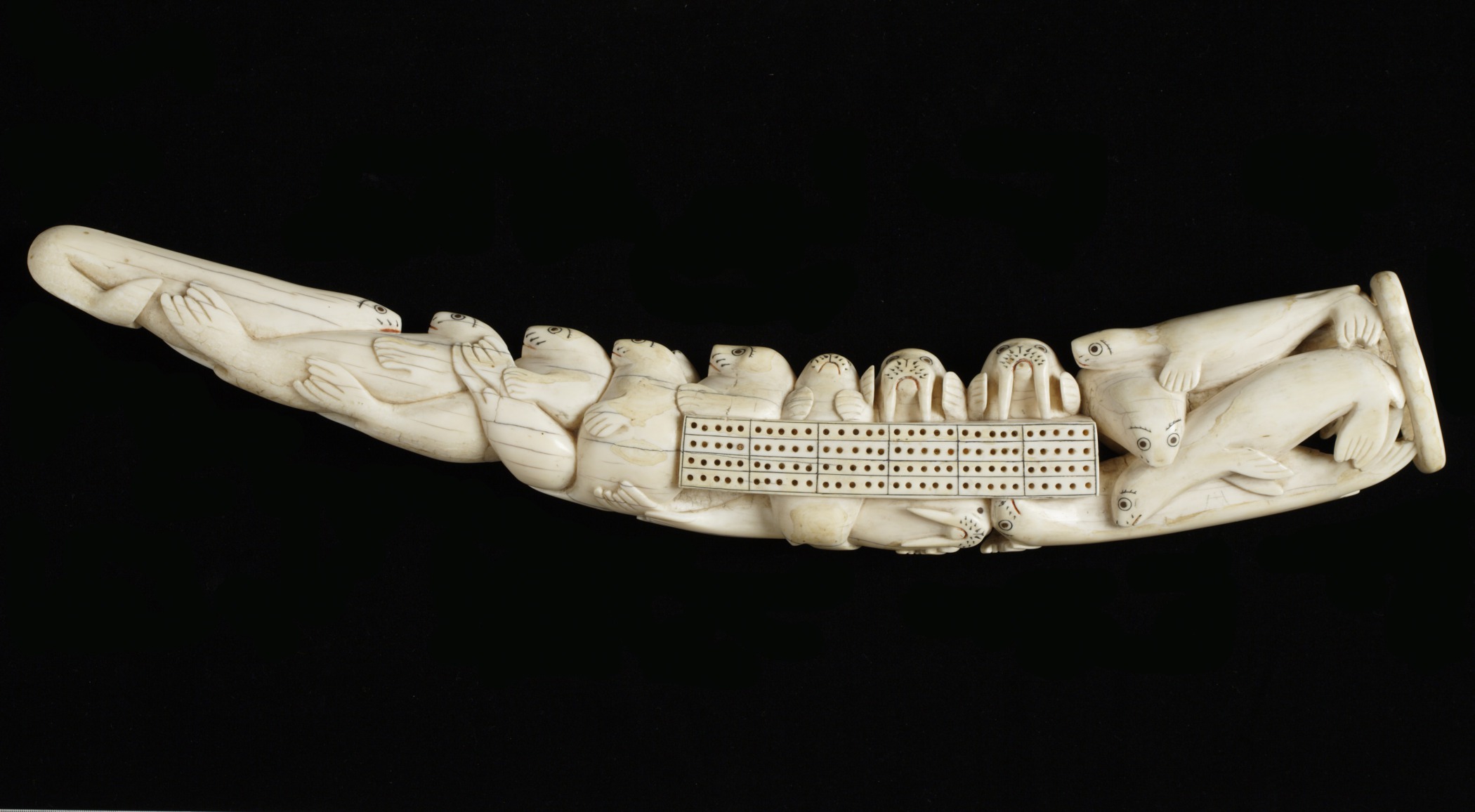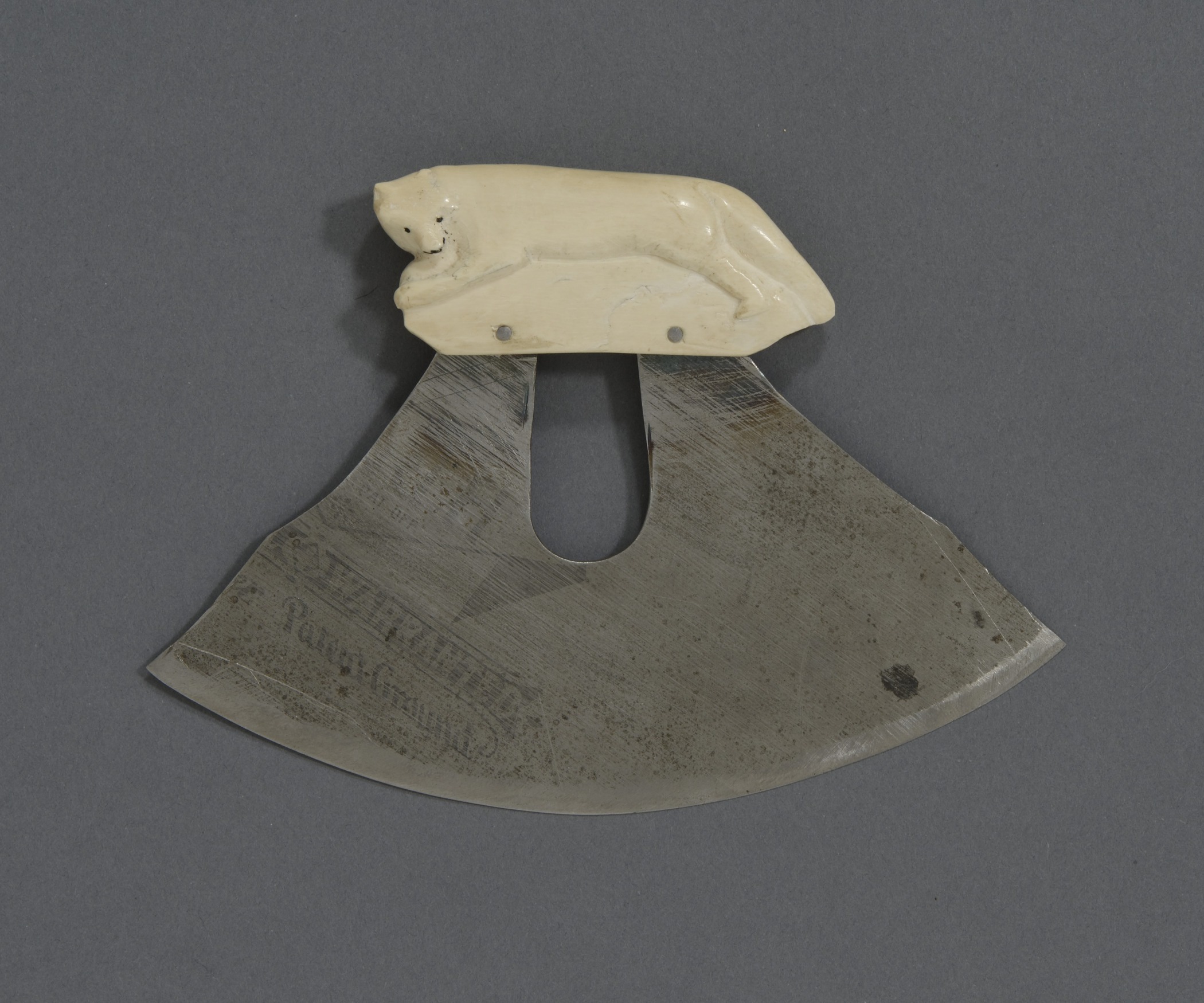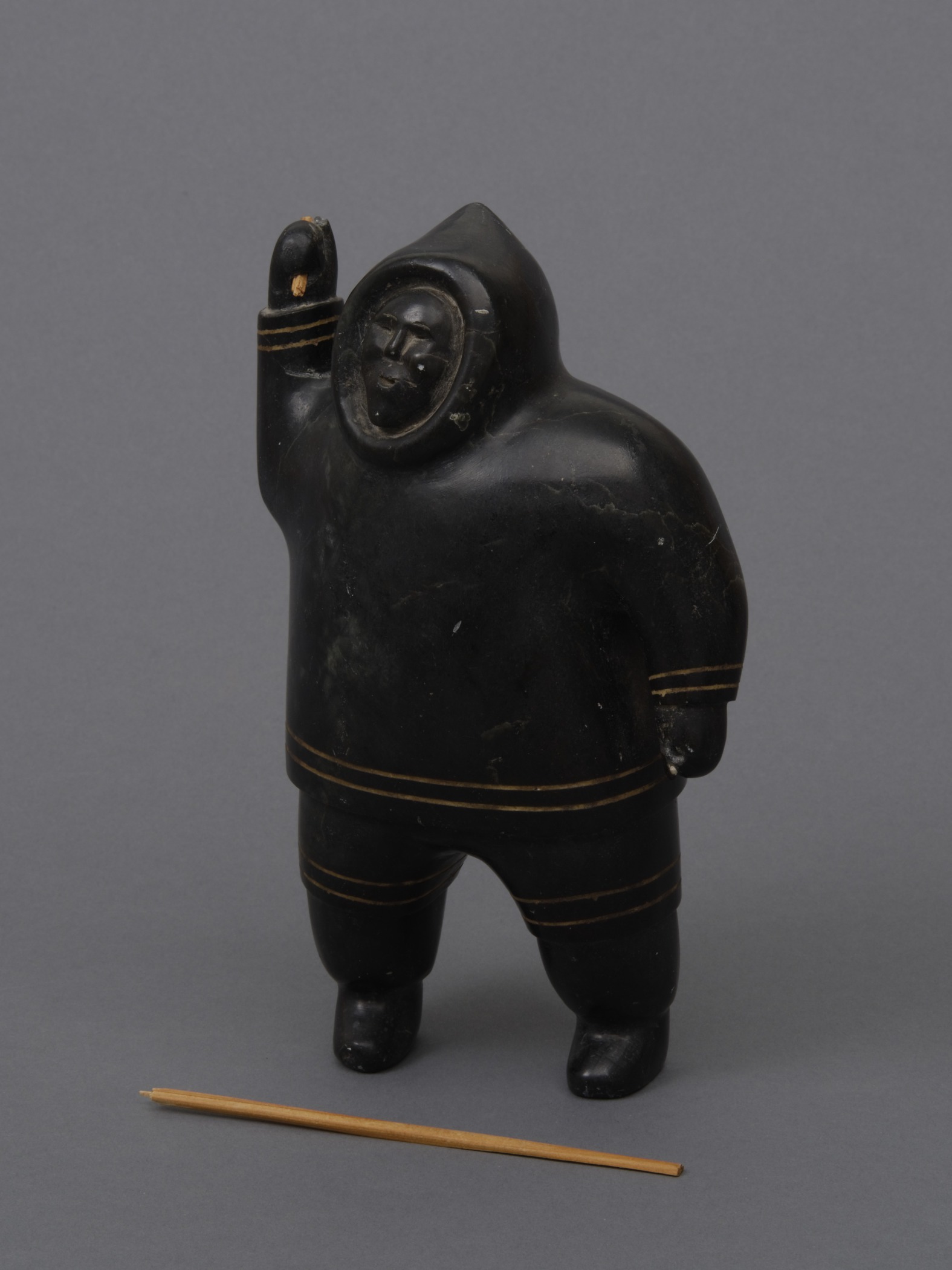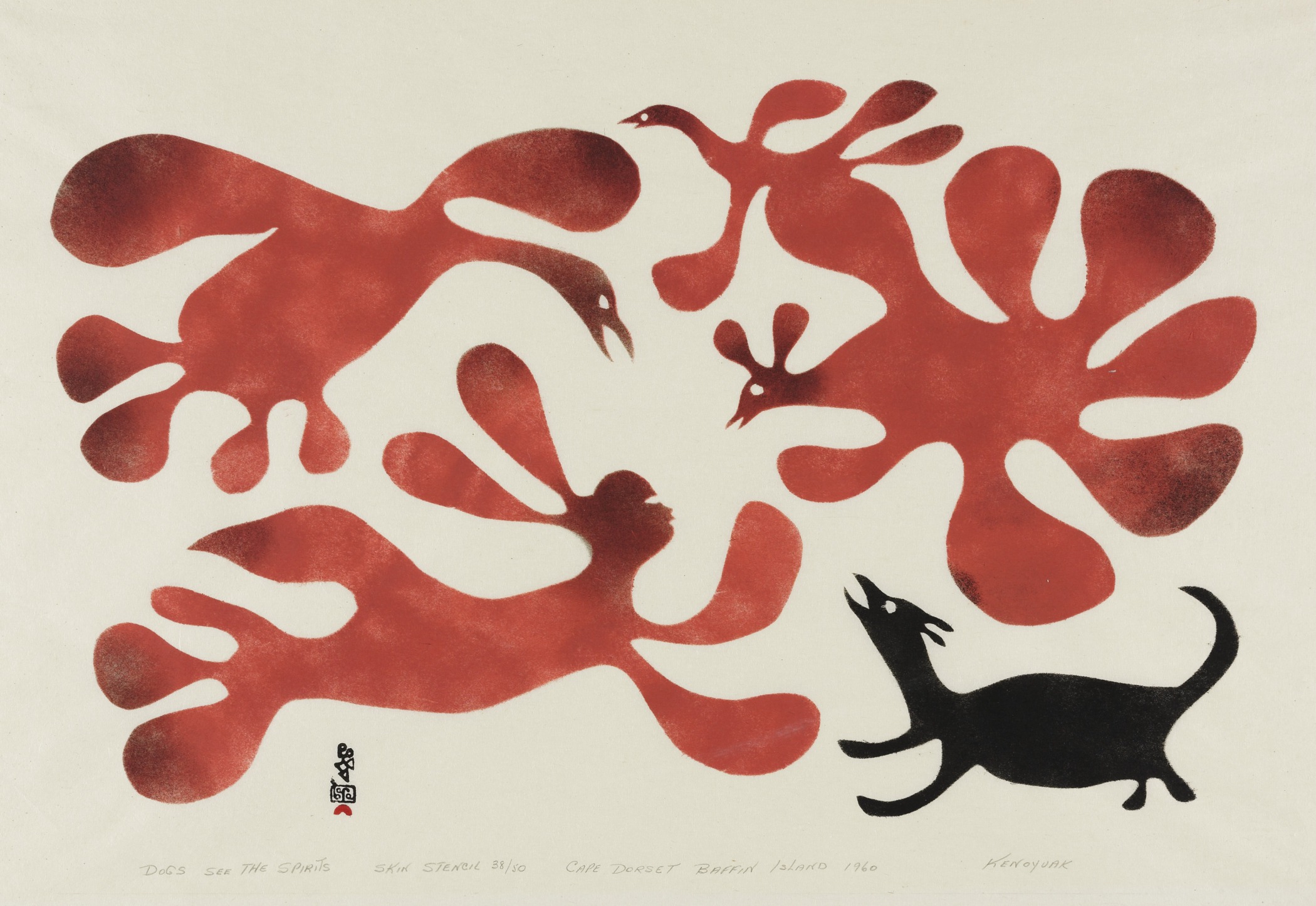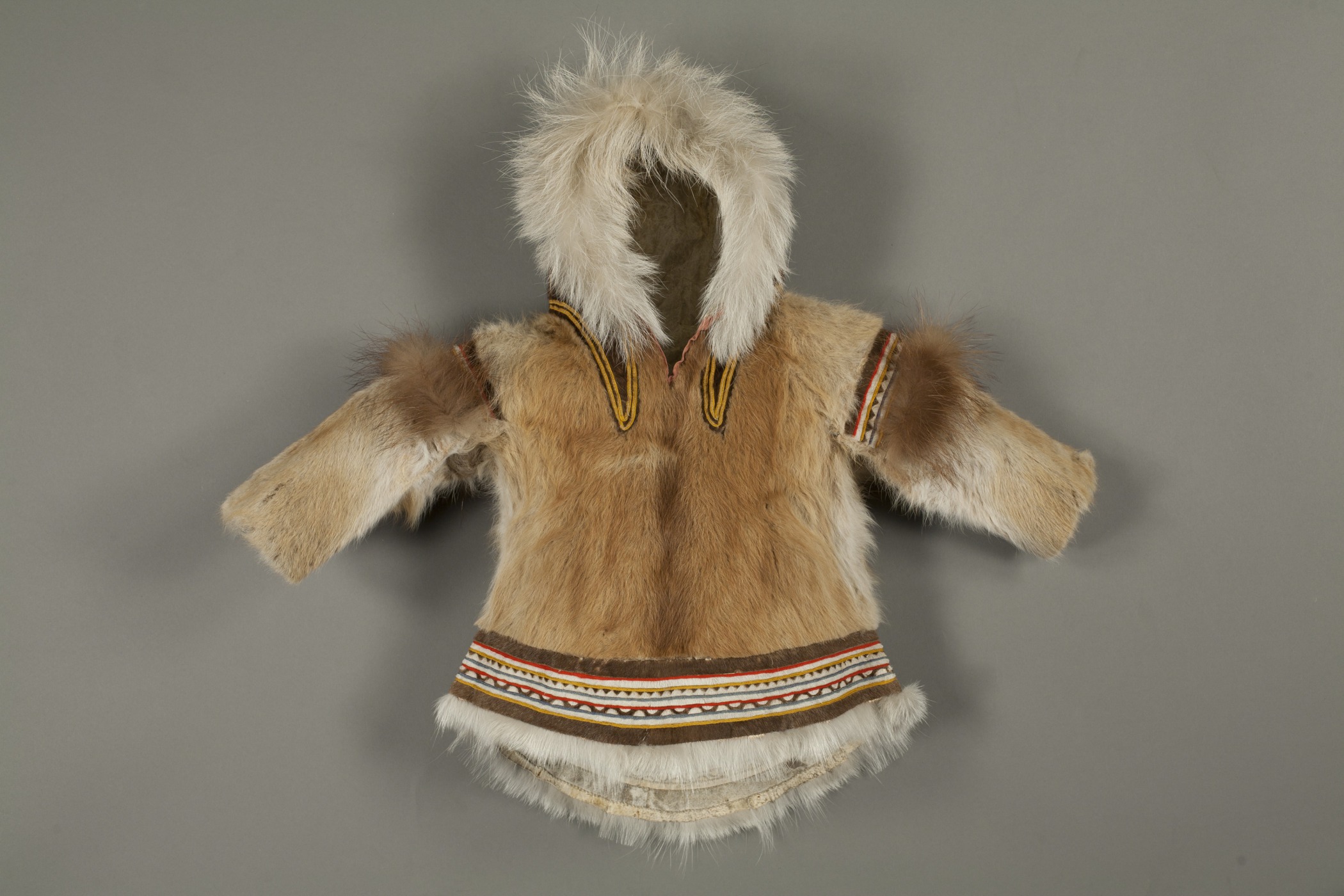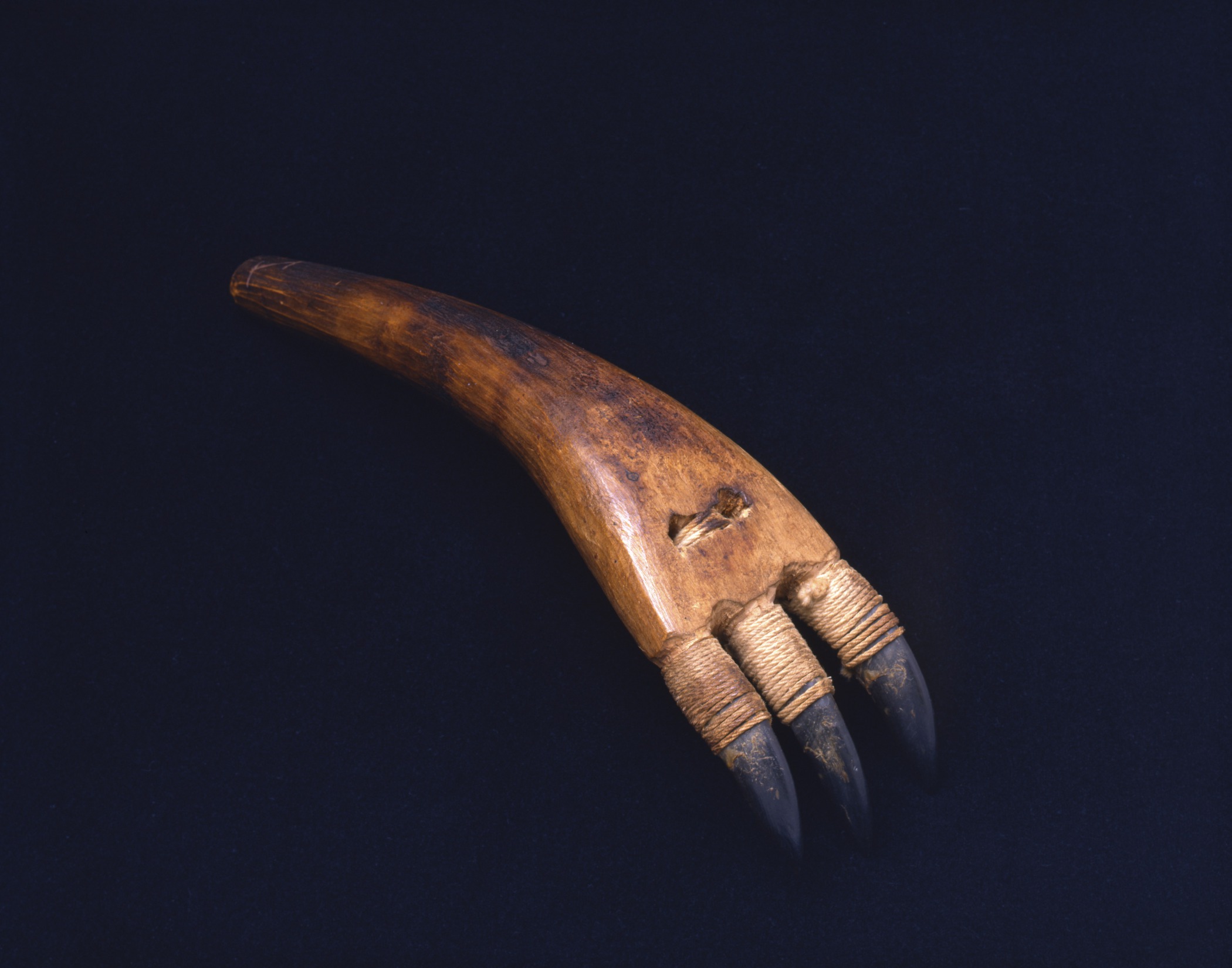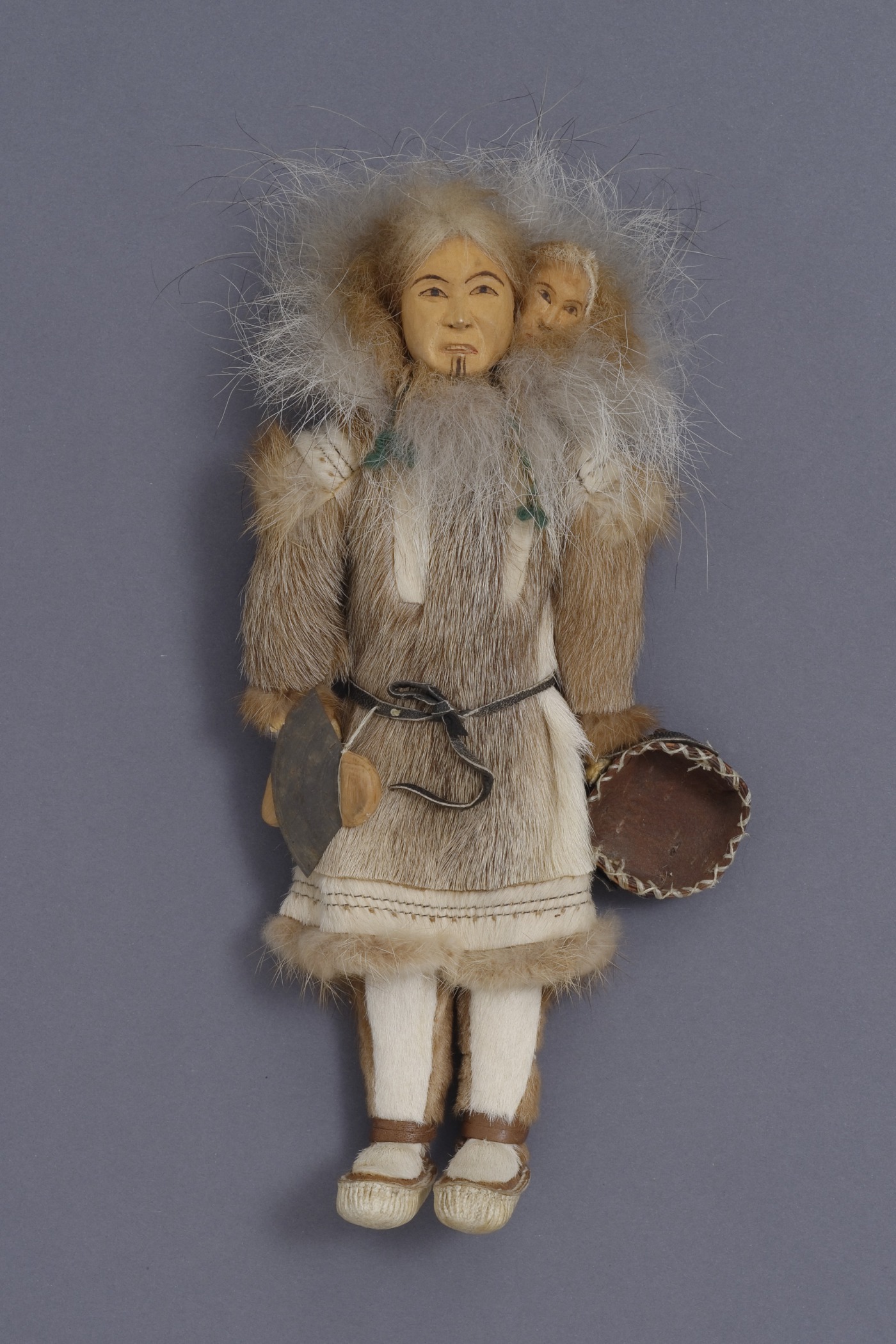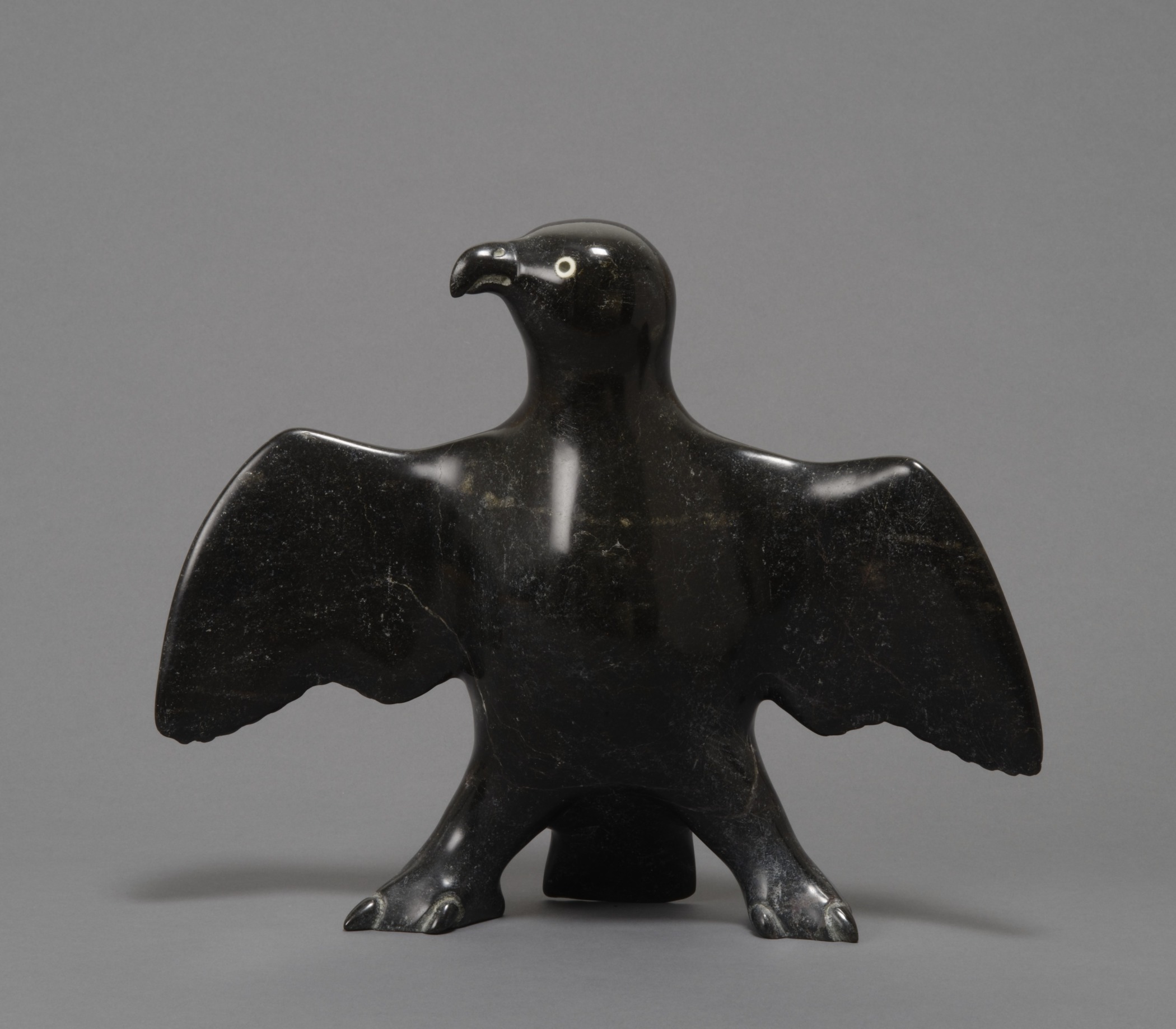Groups throughout the Arctic traded food, clothing, tools, technology, and knowledge with one another for thousands of years. Objects and information moved over the sea from continent to continent and over land from the Arctic to the Plains. After the arrival of Europeans, indigenous communities acquired materials and goods they found useful, like metal for knives, steel needles, and guns. They also acquired food items like sugar and coffee. They had a great deal to offer in exchange. They traded furs, especially white fox and beaver, which were in high demand in Europe and Asia. With whalers and explorers, they traded tools and winter clothing that were often superior to those made by Europeans. They also traded and sold carvings, models of daily life, dolls, and baskets as souvenirs.
In the 20th century, indigenous artists began producing new art forms for sale to art markets to the south. The objects they produced are remarkable works of art, widely sought after by collectors, and now in the collections of major museums all over the world. This work became a vehicle for preserving cultural knowledge and sustaining tradition while innovating and creating new forms of expression.


